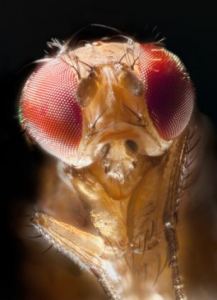
Have you noticed that your car’s windshield seems cleaner today than it did twenty years ago, due to the fact that fewer insect bodies have been splattered on it? I can remember as far back as into the middle/late 1960s when I had to clean my car windshield every few days, in order to clean off the little insect bodies that were stuck to the windshield. But today, I can get by with only doing it occasionally.
A part of my compassionate nature-loving side is thankful that fewer bugs have been killed by my car; but, another side of my nature-loving self gets nervous, wondering ‘why.’ Why are there fewer flying insects? One explanation may be that the transportation system is different with larger, wider highways, where fewer insects may go. But, the bigger issue that is promulgated by science is that there are actually fewer flying insects than in the past.
According to an article in the Washington Post, titled, “This is Very Alarming: Flying Insects Vanish From Nature Preserves,” this phenomenon of having ‘cleaner windshields’ is a real sign of a dramatic problem of declining populations of flying insects.
Flying insects are worth approximately $57 Billion to the U.S. economy each year. They save farmers $4.5 Billion per year by eating up the crop pests. And, they make $3 billion per year by pollinating fruits and vegetables. They also represent billions of dollars by being food for birds, game, and fish. In short, they keep our infrastructure of life going by supporting its ecosystems.

For more than a decade, science has educated us about the decline of various and individual species of insects. But, even worse, we are now learning that many of the Nature Preserves are also showing signs of dramatic decline. Specifically, a recent study that analyzed trends in the biomass of flying insects across multiple German Nature Preserves reported that over a 27-year period (1989-2016), the biomass of the insects (ie., the total amount of insect volume) declined by 76 per cent. And, no one is really able to pinpoint WHY.
To learn more about the study, click HERE.
It is suggested that one thing we can do to help these flying insects better survive is to include a lot of flowering plants, particularly year-round flowering plants, in our landscaping.
Do you notice fewer flying insects? If you have any suggestions for helping these insects, we would be thrilled to hear from you.
